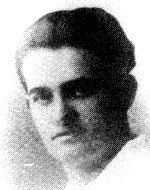Kimchi-Moznik, Anshel
Son of Golda and David. He was born on Lag BaOmer, May 14, 1914, in the city of Aharov in Bessarabia, to a rich and traditional family, his father was a member of the Mizrachi movement and an active member of the Jewish community in the city. When he was a child and only began to read, he used to gather his friends and read to them the history of the people of Israel and the heroic deeds of antiquity. Despite the harassment of anti-Semitic teachers, during which he joined the Gordonia youth movement and attracted many of his friends. He was a mentor in the movement, instilled in his students the love of the Land of Israel and the people of Israel and the yearning to immigrate to Israel, He knew, even then, the difficulties and obstacles that would stand in his way and in his diary when he was 14 years old, he wrote “I desire that my blood and soul protect my people.” Anshel, who had a rare memory and to the surprise of his friends, memorized the entire book of Psalms, and he decided to continue his studies at the Technion in Haifa with the help of his brother who immigrated to Israel before him. The security situation worsened in the outbreak of the bloody riots of 1936-1939. Anshel settled in Hadera, joined the ranks of the Haganah and participated in various security operations. In his search for a “work day” he worked on paving roads, processing orchards, etc. More than once he was sent to work in remote and dangerous places where Arab gangs raged. His parents and girlfriend urged him in letters to return to Romania and study medicine, but he refused. On 27 Tamuz, July 17, 1936, when he returned with his friends from work in the citrus orchards east of Hadera, they were attacked by gunfire from the ambush. Anshel was wounded and killed and brought to rest in the old cemetery in Hadera. He left a brother in Israel and parents and sisters abroad who perished in the Holocaust. Anshel is commemorated in the book “The 1936 Riots”, in the book “Ahriov in its Construction and Destruction” and in the book “Haganah in Hadera”. The details of the event were published in the newspapers of the period.
